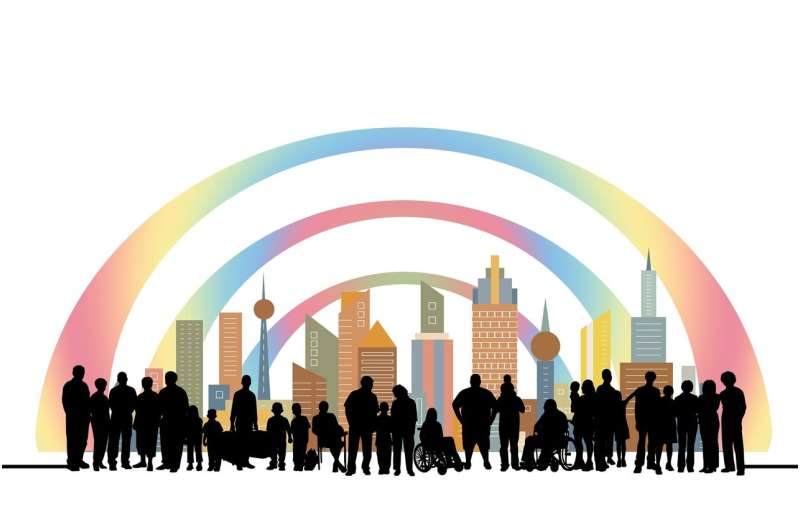This article has been reviewed according to Science X's editorial process and policies. Editors have highlighted the following attributes while ensuring the content's credibility:
fact-checked
peer-reviewed publication
trusted source
proofread
Show, don't tell: Attracting a diverse workforce

Over the last decade, a growing number of companies and organizations have included messages about diversity and inclusion as part of their employee recruitment efforts. A study published recently in Personnel Psychology examined these efforts and found job seekers who identify as LGBTQ+ are looking for signs of authentic support.
"As organizations seek to attract a more diverse workforce, it's important that they're not just saying that they care but that they embody practices to attract individuals," says Kristie Moergen, assistant professor of management and entrepreneurship at Iowa State University. Moergen co-authored the paper with lead author Cody Bradley, James Madison University; Dorothea Roumpi, The Pennsylvania State University; and Lauren Simon, University of Arkansas.
The researchers focused on two types of signals on company websites and explored how they impact a job seeker's initial attraction to and perceived fit with a company. Pointing signals "tell" prospective employees that diversity and inclusion is "embraced." Examples include a CEO statement of LGBTQ+ support or a picture of employees participating in a pride parade.
Activating signals "show" prospective employees how diversity and inclusion are "actively embodied," such as an LGBTQ+ employee resource group or training policy for a company's suppliers.
Two experiments, one survey
Between 2020 and 2022, the researchers conducted two experiments and one survey, using Prolific, an online data collection platform, to recruit participants.
The first experiment involved participants who identified as LGBTQ+, lived in the U.S., and were active job seekers. Participants looked at one of three websites for a fictional logistics company and answered questions about perceptions of diversity climate, organizational attraction and person-organization fit.
One of the websites included a high frequency of pointing signals. Another contained more activating signals. With the third version, the researchers replaced the language and images about diversity and inclusion with content related to other values, like commitment.
The second experiment mirrored the first experiment. The only difference was that participants did not identify as LGBTQ+. For the survey study, participants from both groups evaluated the websites of potential employers from their recent job search experiences.
"The final study helped us account for other reasons someone may be attracted to an organization, like geographic location or industry reputation. The results showed that, even after accounting for other organizational information, diversity signals remain important to job seekers," explains Moergen.
Findings
In the first experiment with LGBTQ+ participants, the researchers found pointing and activating signals positively influenced perceptions of diversity climate; however, activating signals were significantly better at increasing perceptions of diversity and inclusion. These perceptions increased the job seekers' initial attraction to and perceived fit with the company.
In the second experiment with non-LGBTQ+ participants, both activating and pointing signals increased participants' perceptions of diversity climate. This shows signals of LGBTQ+ inclusivity can "spillover" and positively impact other job seekers' attraction to and fit with a company.
Results from the survey study were consistent with the first and second experiments. Specifically, job seekers overall were more attracted to and perceived better fit with real organizations that actively signaled authentic support for LGBTQ+ employees on their corporate websites.
Based on their findings, the researchers say companies and organizations that want to recruit and support a diverse workforce "must go beyond telling" and show "underlying actions behind the company's words."
More information: Cody Bradley et al, Don't just tell me, show me: Impacting perceptions of organizational attraction and fit using activating LGBT diversity signals, Personnel Psychology (2023). DOI: 10.1111/peps.12595
Journal information: Personnel Psychology
Provided by Iowa State University


















